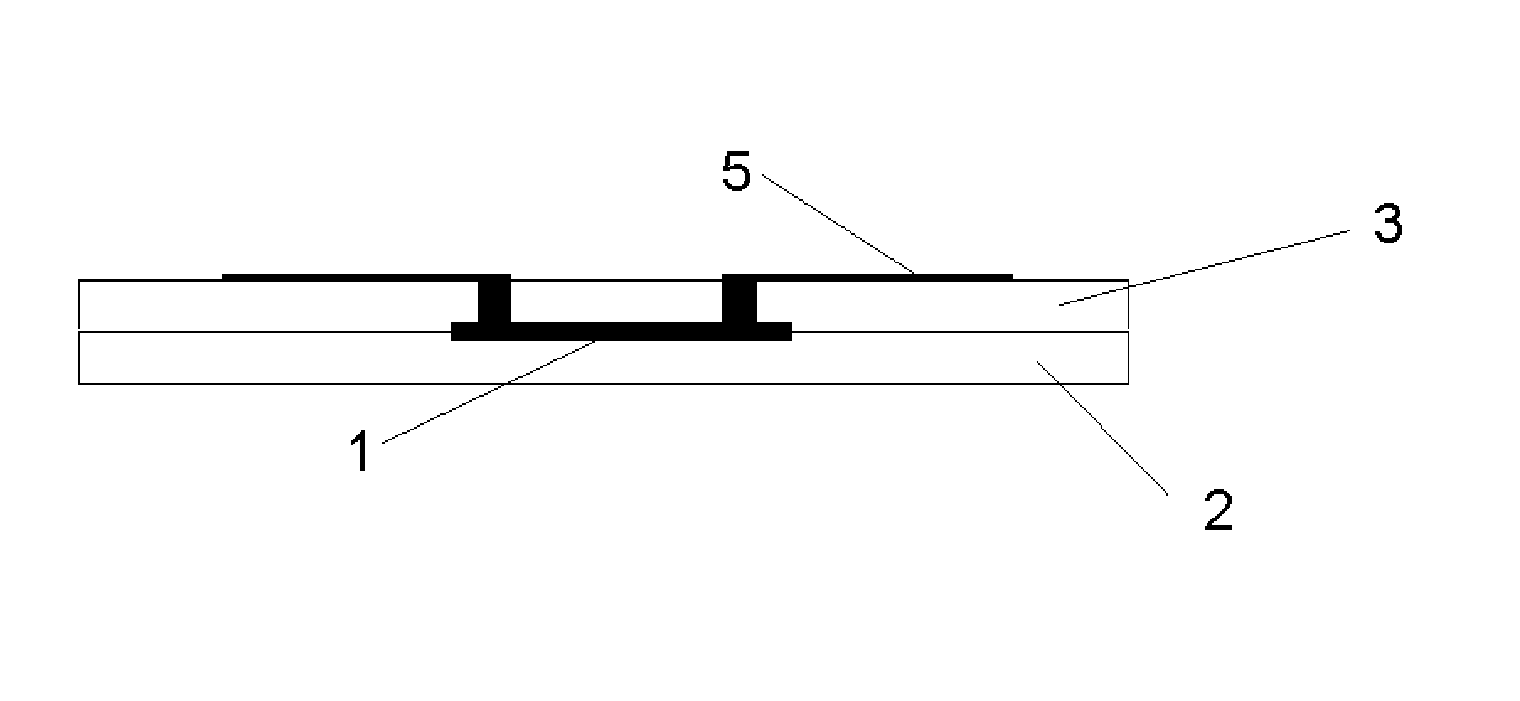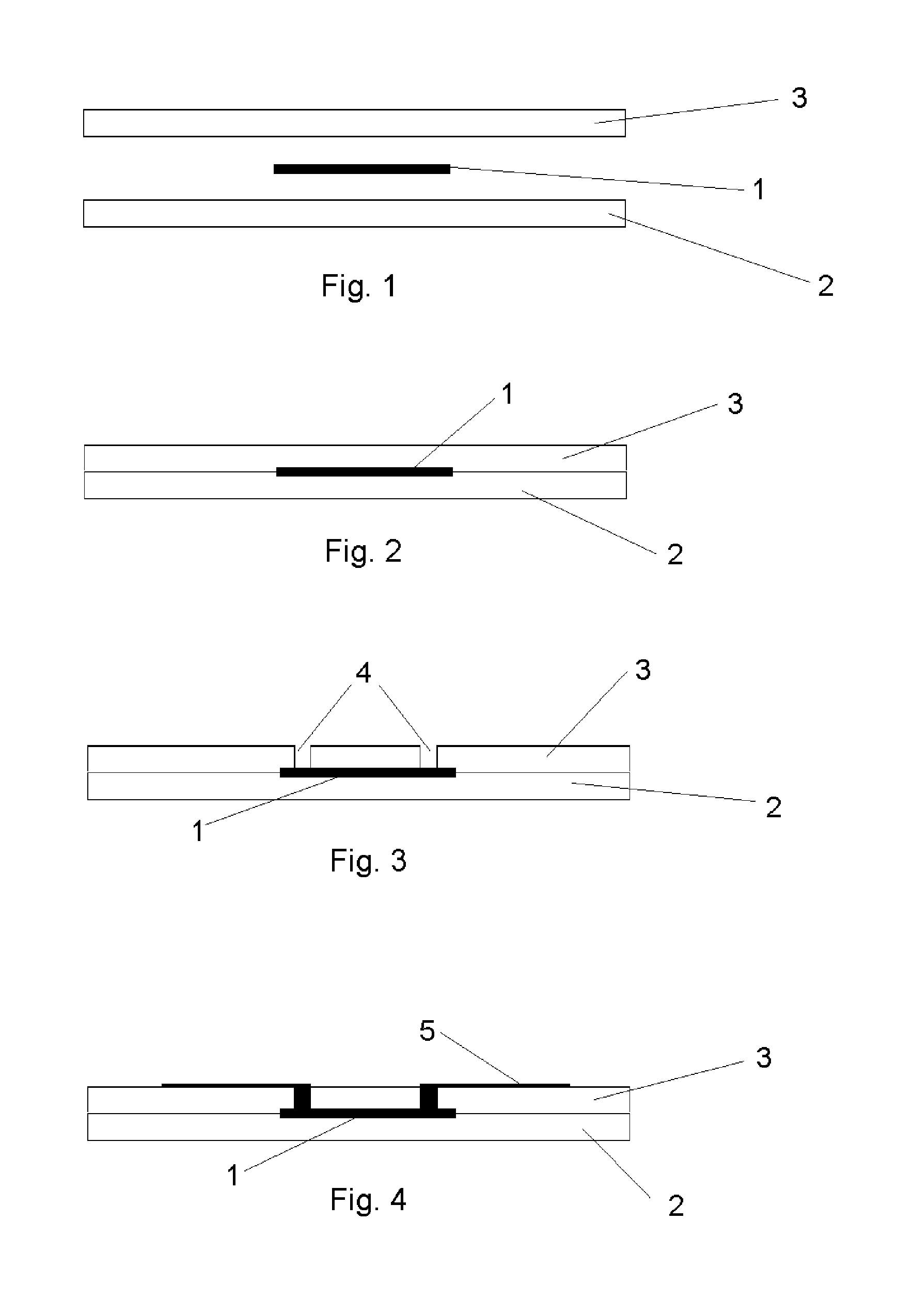Method for manufacturing an electronic device
a manufacturing method and electronic technology, applied in the direction of burglar alarm mechanical actuation, burglar alarm by hand-portable article removal, instruments, etc., can solve problems such as procedural inconvenience, achieve high precision and cost-effectiveness, and facilitate handling. , the risk of negatively affecting the integrated circuit during the application of laser radiation is minimized
- Summary
- Abstract
- Description
- Claims
- Application Information
AI Technical Summary
Benefits of technology
Problems solved by technology
Method used
Image
Examples
Embodiment Construction
[0031]In FIG. 1 an integrated circuit (IC) 1 is arranged between a first substrate layer 2 and a second substrate layer 3. The IC 1 can be attached either by using glue or directly to the substrate material by using thermal or ultrasonic processes. This arrangement is then laminated to give the structure as shown in FIG. 2. Due to the low IC 1 thickness the substrate layers 2,3 are nearly parallel and the IC 1 is hermetically sealed and well protected by the substrate layers 2,3.
[0032]After this, holes 4 are made in the substrate layer 3 above the contacting surfaces of the IC 1 to give a structure as shown in FIG. 3. The contacting surfaces of the IC 1, such as, e.g., bond pads or bumps, are now in open connection to the ambience.
[0033]After this, the conductive structure 5 is printed on the surface of the second surface layer 3 with a conductive ink, so that the formation of the conductive structure, e.g. the antenna, and its coupling to the IC 1 via conductive material in the hol...
PUM
| Property | Measurement | Unit |
|---|---|---|
| thickness | aaaaa | aaaaa |
| thickness | aaaaa | aaaaa |
| conductive | aaaaa | aaaaa |
Abstract
Description
Claims
Application Information
 Login to View More
Login to View More - R&D
- Intellectual Property
- Life Sciences
- Materials
- Tech Scout
- Unparalleled Data Quality
- Higher Quality Content
- 60% Fewer Hallucinations
Browse by: Latest US Patents, China's latest patents, Technical Efficacy Thesaurus, Application Domain, Technology Topic, Popular Technical Reports.
© 2025 PatSnap. All rights reserved.Legal|Privacy policy|Modern Slavery Act Transparency Statement|Sitemap|About US| Contact US: help@patsnap.com


